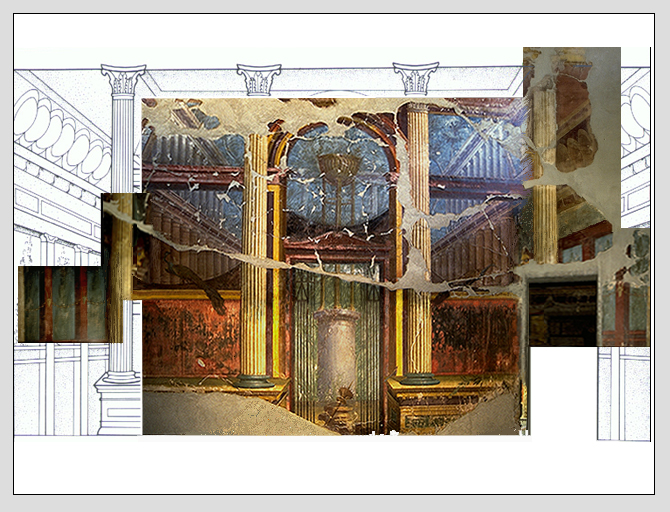 1>
1>Picard’s proposition would not have had a systematic basis without the transition between planar and spatial composition, that occurred in Roman wall-painting in the early part of the first-century BC. The quintessential new feature that orchestrated this change was linear perspective. It dissolved the hitherto planar characteristic of the wall to such an extent that it created sophisticated virtual realities (fig.1). Although these did not rigidly conform to the laws that governed perspective some fourteen hundred years later, its orientation within the entire room created highly convincing trompe l’oeil compositions. As Picard correctly observed the image that came to dominate this new development was that of the entrance. Its pictorial representation took many forms such as doors, gates, pediment facades, walled-up openings, cave or grotto entrances and aediculae tombs. These images then acquired eschatological or divine significance through close visual proximity to statues of deities, tholoi, stelae, naiskoi, incense burners, food offerings, and votive or sacrificial objects. As Picard pointed out, this mixture of functional and spiritual imagery invariably represented either a stylised tomb entrance or a temenos sanctuary.
|